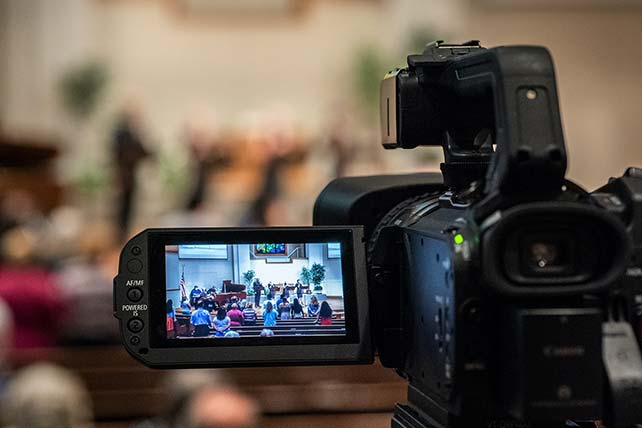Livestreaming’s temporary role
While churchgoers identify various ways watching church livestreams has played roles in their walks with God, most say livestreaming is a temporary way to participate in the mission of the church during an illness or emergency like COVID (53%). Fewer say it is a supplemental biblical teaching resource for them (31%), it is how they say in tune with the direction their church is headed (24%) or it is how they get to know a new church before visiting in person (20%). Fewer than 1 in 5 say it is the primary biblical teaching they receive (18%) or the main way they connect with their churches (17%). And 11% say livestreaming does not play any of these roles in their walks with God.
A churchgoer’s age is indicative of their views on livestreaming’s role in their walk with God. The oldest churchgoers (those over 65) are the least likely to say watching an online church service is the main way they connect with the church (6%), the primary way they receive biblical teaching (9%) or how they get to know a new church before visiting in person (8%). They are also among the least likely to say watching a livestream service is how they stay in tune with the direction of their church (14%). These oldest churchgoers are the most likely to say livestreaming is a temporary way to participate in the mission of the church during an illness or emergency (60%).
“People’s use of online church services varies greatly. The majority only use it for emergencies, while 1 in 6 say it is the main way they connect with their church,” McConnell said. “Older churchgoers are the least interested, including some who never tuned in to their church online even when that was all their church offered during COVID.”
For more information view the complete report.
This article originally appeared here.

